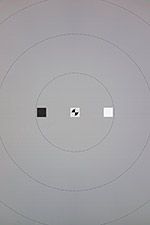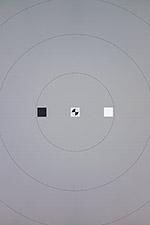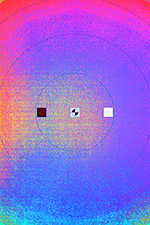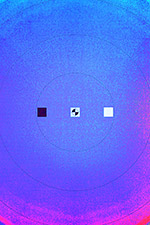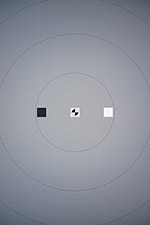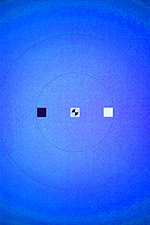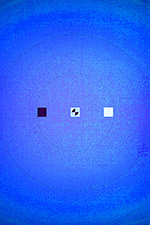Latest from the IR Lab: A perplexing Sony RX1 mystery solved and a sneak peek at ongoing camera tests
posted Friday, February 1, 2013 at 6:04 PM EDT
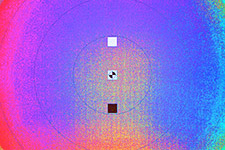
Over time, I've often been struck by how much goes on behind the scenes at IR that never makes it out to our readers. We sometimes spend dozens of hours in the test lab and weeks of calendar time tracking down and characterizing problems that we've found with cameras, only to have the result reduced to just a line or two in the final review.
In another direction, thanks to the depth of our reviews and our convoluted workflow for producing them, a lot of time often goes by between our posting of the first test shots and when the review finally sees the light of day.
To address both these issues, and to hopefully surface a bit more of what goes on behind the curtain here at IR, I've decided to post regular updates on the latest happenings in our test lab. At a minimum, these will be quick takes on cameras we've recently shot, but we'll also share peculiar-seeming results, hopefully with an analysis of what's causing them.
(Note: If you subscribe to the free IR Newsletter, you not only get more of this inside info, but earlier access to it as well.)
In this, hopefully the first of many "Latest from the IR Lab" reports to come, we solve a mystery regarding a color tint issue that cropped up in our testing of the Sony RX1, as well as share our initial thoughts on a handful of cameras -- Canon 6D, Canon EOS M, Nikon D5200, Fuji X-E1 and Olympus XZ-2 -- that we're currently putting through their paces.
Sony RX1 tint issues
(See update below, about RAW files)
The Sony RX1 is quite possibly our all-time favorite camera, and we'll hopefully be posting a full review of it sometime in the next couple of weeks. However, we discovered a subtle red-to-cyan color tint that appeared from left to right across the screen in some -- but not all -- of our test images. The effect was very subtle; it was completely unnoticeable in most of our images, and it took eagle-eyed technical editor Zig to find it in shots of some of our lab targets. I think we were the first to observe this, but a reader subsequently emailed in to report the issue, and wondering if we had seen it, too.
|
Sony RX1 -- shading correction on
|
|||
|
Grip Up
|
Grip Down
|
Grip Up
(huge saturation boost) |
Grip Down
(huge saturation boost) |
The table above shows thumbnails of original images displaying the problem, as well as versions of the same shots that had their color saturation boosted by 99% in Photoshop to make the color tinges obvious. The thumbnails above link to the full-sized shots if you click on them and want to analyze them yourself. In the as-shot images on the left, if you look closely at the tops and bottoms, you'll be able to see the red/cyan or cyan/red tint difference between them. The two shots on the right had the color saturation amped up to 100 in Photoshop, to make the faint color tints glaringly obvious.
These shots were captured with the camera on a tripod, looking at our flash range/uniformity target. The target was illuminated with our carefully-balanced HMI studio lights, so illumination was uniform to less than 1/10 EV. (The slightly dark corners in the shots seen here were caused by shading (aka vignetting) in the camera itself.) To make it easier to see the problem, as well as to demonstrate that it wasn't caused by our lighting, senior tech Luke shot two images within less than a minute of each other -- one with the camera positioned grip-up, the other with it mounted grip-down, pointing at the same target. Having the images inverted next to each other makes it relatively easy to see the subtle differences between them in their unmodified state, but the saturation-boosted versions don't need any close juxtaposition to see the differences.
What was puzzling was that we didn't see this phenomena in all our shots; in some there was no sign of it whatever. With typical IR zeal, we had to get to the bottom of this, and I'm happy to report that we finally did. The culprit? The RX1's automatic shading correction. The two sets of thumbnails above show the same subject, shot just moments later, but with shading correction turned off. (Actually, these were shot interspersed with the first set of examples, with both shots in each camera orientation taken together.)
The good news in this is this should be a relatively easy problem for Sony to correct: The shading compensation is being done in firmware, so it shouldn't be a big issue to update the code to change how it operates. We'll update you when we hear back from Sony on this. In the meantime, you can just disable the camera's shading compensation, and handle it in Photoshop.
Update: In RAW files, too...
I hadn't thought to look in the RAW files to see whether or not they were affected (I mean, "RAW" should mean RAW, right?), but tech editor Zig thought he remembered seeing it in some of our RAW files as well. Sure enough, when we looked, we saw very similar tint issues to what I found in the JPEGs. The moral of the story is don't trust Sony's "RAW" to be truly RAW, and RX1 owners encountering this issue need to disable shading correction, even if they're shooting in RAW.
On other fronts, we've had a number of new cameras arrive just recently; here's a quick rundown on some of them:
First impressions
Canon 6D: Full test shots posted for pixel peeping. Phenomenal high-ISO performance! Per usual, the Nikon competitor (the Nikon D600) beats the Canon on its handling of the difficult red fabric swatch in our Still Life target, but the 6D has it all over the D600 in the high-ISO noise department. Really, really excellent images, although the default JPEG sharpening is rather heavy-handed (typical for Canon). See all the test images (including copious RAW samples) linked from the Canon 6D overview page, and make your own comparisons in the Comparometer.
Canon EOS-M: First Shots posted: As expected, virtually identical image quality as the Canon T4i (same sensor). We haven't gotten to re-testing the AF speed yet, though. The prototype was very slow, similar to the T4i in contrast-detect AF mode. We'll see if there have been any AF improvements in the production version or not.
Nikon D5200: First Shots posted. The excellent 24-megapixel sensor we first saw in the D3200 has now come to Nikon's mid-range consumer model, in the form of the D5200. We were interested to see how images compared with those from the D3200, since it was the same sensor (at least as far as anyone knows), but there's been that much more time go by for Nikon's engineers to work on the noise reduction algorithms. Nothing leapt out at us, but the D5200 does represent a small step forward in image quality, particularly at very high ISOs. Looking at our ISO 6,400 Still Life shot, the differences become pretty clear, especially in the shadows. The D5200's "grain" is much tighter, edges of objects are generally better-defined, and chroma noise in the shadows is considerably reduced. (Not that the D3200 was any slouch in the chroma noise department.) Download our full-res test shots and fiddle with them in Photoshop, and I think you'll be favorably impressed by the slight but noticeable improvements as wel.
Fuji X-E1: Full test shots posted. Just as promised, same superb X-Trans image quality, but a few hundred dollars cheaper than the Fuji X-Pro1. The X-Trans sensor technology really was something of a breakthrough when Fujfilm announced it last year, it's great that they've managed to shave a few hundred off the price of the X-Pro1.
Olympus XZ-2: First Shots posted: Is the buzz about great image quality true? Sure looks like it so far! We haven't done any extensive analysis yet, but stacking it up against Panasonic's beautiful little LX7, the XZ-2 carries the day in most cases. It has to be said, though, that neither holds a candle to the Sony RX100, with its significantly larger sensor. So far we only have the Still Life shots posted for the XZ-2, but that's enough to make your own comparisons in the Comparometer.
